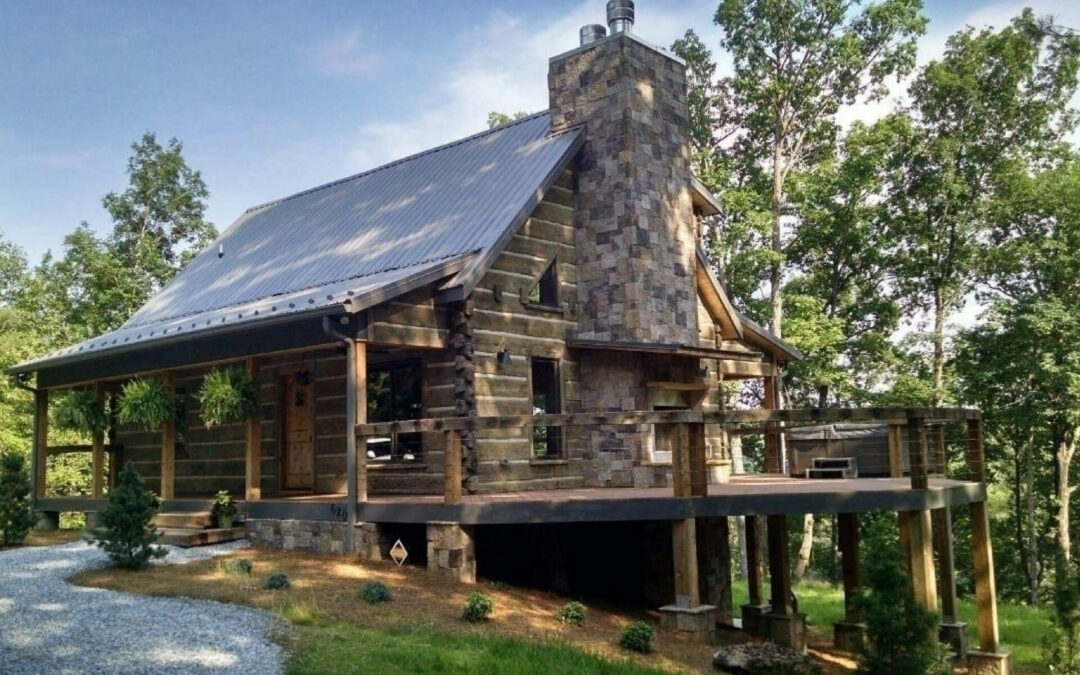Log cabins have a timeless charm that draws people in. The rustic appeal, the cozy atmosphere, and the sense of connection with nature make log cabins a popular choice for many homeowners. However, building a log cabin requires careful consideration of the materials used. The right materials can make a significant difference in the durability, appearance, and overall quality of the cabin. In this article, we will explore the best log cabin building materials, from the basics of log cabin construction to the different types of wood, insulation materials, and roofing options.
Understanding the Basics of Log Cabin Construction
Before delving into the specific building materials, it is important to have a solid understanding of the basics of log cabin construction. Log cabins are built using interlocking logs that provide strength and stability. The logs are carefully chosen and fitted together, creating a structure that can withstand harsh weather conditions and the test of time.
The logs used in log cabin construction can vary in size and shape, depending on the desired style and structural requirements. Typically, logs are either milled or handcrafted. Milled logs are manufactured to specific dimensions, ensuring consistency in size and shape, while handcrafted logs have a more natural and irregular appearance.
The Importance of Choosing the Right Materials
Choosing the right materials for a log cabin is crucial for its longevity and performance. The materials should be selected based on factors such as durability, aesthetic appeal, insulation properties, and resistance to pests and decay.
Additionally, the materials should be able to withstand the unique challenges that log cabins face, such as moisture accumulation, settling of logs, and the expansion and contraction of wood due to temperature and humidity changes.
Key Components of a Log Cabin
When considering the building materials for a log cabin, it is essential to pay attention to the key components that make up the structure. These components include the logs themselves, the foundation, the insulation, the roofing, and the finishes.
The logs provide the structural framework of the cabin and should be chosen for their strength, durability, and aesthetic appeal. The foundation, whether it is a concrete slab or a pier and beam system, should be stable and capable of supporting the weight of the cabin.
Insulation is vital for maintaining a comfortable indoor temperature and reducing energy costs. Proper insulation materials can help regulate heat transfer and prevent drafts. Roofing materials should be chosen based on their ability to shed water, resist wind damage, and complement the overall design of the cabin. Finally, the finishes, such as stains or sealants, protect the logs from UV radiation, moisture, and insect infestation.
Exploring Different Types of Wood for Log Cabins
One of the most significant decisions in log cabin construction is choosing the right type of wood. Different wood species have varying characteristics that affect their suitability for log cabins. Here are three commonly used types of wood for log cabins:
Pine: Pros and Cons
Pine is a popular choice for log cabins due to its affordability and availability. It is a softwood that is relatively easy to work with, making it suitable for both handcrafted and milled logs. Pine logs have a warm and inviting appearance, with their light color and prominent grain patterns. However, pine is more prone to insect infestation and decay compared to other types of wood, so proper treatment and maintenance are crucial.
Cedar: Pros and Cons
Cedar is known for its natural resistance to decay and insect damage, making it an excellent choice for log cabins. It has a distinct aroma and a beautiful reddish-brown color that ages gracefully over time. Cedar logs are generally more expensive than pine, but they offer enhanced durability and longevity. However, cedar may require periodic refinishing to maintain its appearance and protect against weathering.
Oak: Pros and Cons
Oak is a hardwood that is renowned for its strength and durability. It has a rich, golden-brown color and a prominent grain pattern that adds character to log cabins. Oak logs are more challenging to work with due to their hardness, but they offer exceptional resistance to decay and insect infestation. However, oak is typically more expensive than other wood species, making it a less common choice for log cabin construction.
Insulation Materials for Log Cabins
Insulation is a critical aspect of log cabin construction, as it helps maintain a comfortable indoor environment and reduces energy consumption. Here are three common types of insulation materials used in log cabins:
Batt Insulation
Batt insulation is the most widely used type of insulation for log cabins. It consists of blankets or rolls of fiberglass or mineral wool that are installed between the logs or in stud walls. Batt insulation provides excellent thermal resistance and is relatively easy to install. However, it may not be the most effective option for preventing air leakage in log cabins due to their inherent gaps and irregularities.
Spray Foam Insulation
Spray foam insulation is a popular choice for log cabins due to its ability to seal gaps and provide superior insulation performance. It is applied as a liquid that expands and hardens, forming a continuous insulation layer. Spray foam insulation offers excellent thermal efficiency and helps reduce drafts and noise transmission. However, it can be more expensive than other insulation materials and requires professional installation.
Rigid Foam Insulation
Rigid foam insulation, also known as foam board insulation, provides a high level of thermal resistance and is commonly used in log cabins. It comes in rigid panels that are installed between the logs or on the interior/exterior of the cabin. Rigid foam insulation is lightweight, easy to handle, and resistant to moisture. However, it may require additional measures to prevent air leakage and condensation within the cabin.
Roofing Options for Log Cabins
The choice of roofing materials plays a crucial role in protecting the log cabin from the elements and enhancing its overall appearance. Here are two commonly used roofing options for log cabins:
Metal Roofing
Metal roofing is a durable and long-lasting option for log cabins. It offers excellent resistance to fire, wind, and hail damage. Metal roofs come in various styles and colors, allowing for customization to match the cabin’s aesthetic. Additionally, metal roofing is lightweight and requires minimal maintenance. However, it can be more expensive upfront compared to other roofing materials.
Asphalt Shingles
Asphalt shingles are a popular choice for log cabins due to their affordability, ease of installation, and versatility. They come in a wide range of colors and styles, allowing for flexibility in design options. Asphalt shingles offer good protection against weather elements and have a relatively long lifespan. However, they may require periodic replacement and maintenance to prevent damage from UV radiation and high winds.
Wood Shingles
Wood shingles provide a traditional and natural aesthetic to log cabins. They are typically made from cedar or redwood and can be either machine-cut or hand-split. Wood shingles offer excellent insulation properties and are resistant to rot and decay when properly maintained. However, they require regular maintenance, such as staining or sealing, to prolong their lifespan and prevent weathering.
When it comes to log cabin construction, selecting the right building materials is essential. The choice of logs, foundation materials, insulation, and roofing options can significantly impact the durability, appearance, and overall performance of the cabin. By understanding the basics of log cabin construction and exploring the different materials available, homeowners can make informed decisions that will result in a log cabin that stands the test of time and provides a warm and inviting retreat in nature.
Discover the Smart Alternative with Smart Logs Of The Carolinas
Ready to build a log cabin that embodies the classic charm without the traditional drawbacks? Choose Smart Logs of the Carolinas for a superior alternative to conventional wood logs. Our concrete logs are not only environmentally friendly and low maintenance, but they also boast exceptional resistance to insects, weather, and fire, ensuring your cabin remains a safe and enduring sanctuary. With Smart Logs, you’ll enjoy the beauty of authentic hand-hewed logs, the efficiency of a cost-effective build, and the peace of mind that comes from using materials that are kind to the planet. Don’t settle for less—preserve natural resources and save on long-term costs with our innovative concrete log solutions. Contact Us! today at 828.781.2015 or email us at info@mysmartlogs.com to start crafting your dream log cabin with Smart Logs of The Carolinas.

